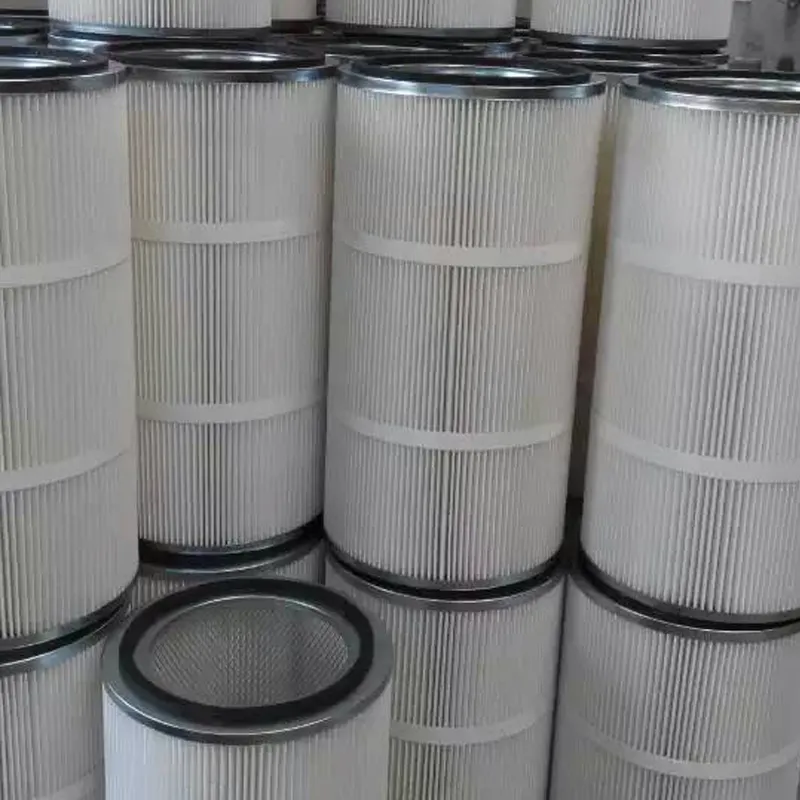 Tel:
+8615930870079
Tel:
+8615930870079
Nov . 30, 2024 05:36 Back to list
Efficient Filtration Solutions Using Cartridge Vacuum Filters for Various Applications
Understanding Cartridge Vacuum Filters Applications, Benefits, and Operating Principles
Cartridge vacuum filters are essential tools in many industrial and laboratory settings, designed primarily for solid-liquid separation. Their effectiveness, efficiency, and versatility make them a popular choice in a variety of sectors, including pharmaceuticals, food and beverage processing, wastewater treatment, and chemical manufacturing. This article explores the different aspects of cartridge vacuum filters, examining their structure, operational principles, benefits, and applications.
Structure of Cartridge Vacuum Filters
Cartridge vacuum filters consist of a series of filter cartridges housed within a sturdy filter housing. The cartridges are fabricated from various materials such as polypropylene, nylon, or glass fiber, depending on the specific application and the characteristics of the liquid being filtered. The design typically features a hollow cylindrical shape, with a porous structure that allows liquids to pass through while retaining solid particles.
The filter cartridges can be arranged in multiple configurations, including vertical or horizontal placements. This design flexibility allows for efficient filtering with minimal space requirements. Additionally, the filters are equipped with a vacuum system that aids in drawing the liquid through the cartridges and ensures a rapid filtration process.
Operating Principles
The operation of a cartridge vacuum filter involves several fundamental steps. Initially, the mixture containing solids and liquids is introduced into the filter housing. A vacuum is created within the system, which causes the liquid to be drawn through the filter cartridges while the solid particles are trapped on the surface of the filter media.
As the filtration progresses, the solids accumulate on the filter surface, creating a filter cake. This filter cake can enhance the filtration process by providing an additional barrier against smaller particles. However, as the cake builds up, it can gradually reduce the flow rate, so periodic cleaning or replacement of the cartridges may be necessary to maintain efficiency.
Once the filtration process is complete, the trapped solids can be removed, and the clean liquid is collected from the outlet. This process can be automated or manually controlled, depending on the design of the system and the specific needs of the operation.
cartridge vacuum filter

Benefits of Cartridge Vacuum Filters
Cartridge vacuum filters offer numerous advantages, making them a preferred choice in many settings. One of the primary benefits is their ability to achieve high levels of filtration efficiency. The combination of a fine filter medium and a vacuum aid allows for the removal of fine particles from liquids, producing a clear filtrate suitable for further processing or use.
Moreover, these filters are relatively easy to maintain. The cartridges can often be replaced quickly and with minimal downtime. Additionally, the compact design of cartridge vacuum filters makes them well-suited for environments where space is limited.
Another significant advantage is their versatility. Cartridge vacuum filters can handle a wide range of materials, from viscous slurries to clear liquids, making them adaptable for various industrial processes. They can also be configured to accommodate different flow rates and solid loadings, allowing for tailored solutions.
Applications of Cartridge Vacuum Filters
Cartridge vacuum filters find application across numerous industries. In the pharmaceutical sector, they are utilized for the filtration of drug compounds and intermediates, ensuring the final products meet stringent purity standards. Similarly, in the food and beverage industry, these filters play a crucial role in the clarification of juices, wines, and other liquid products, enhancing quality and safety.
In wastewater treatment, cartridge vacuum filters are employed to remove suspended solids from effluents, thereby improving water quality before discharge. Their applications also extend to chemical manufacturing, where they facilitate the separation of reactants from solvents or by-products.
Conclusion
Cartridge vacuum filters represent an integral component of modern filtration systems, providing efficient solid-liquid separation across various industries. Their design, efficient operation, and ease of maintenance make them a practical choice for achieving high-quality filtration. As industries continue to evolve and demand stricter standards for product quality and environmental compliance, the relevance of cartridge vacuum filters will undoubtedly expand, solidifying their position as a vital technology for fluid processing.
-
Types and Applications of Air Filtration CartridgesNewsJul.28,2025
-
The Role of Gas Turbine FiltersNewsJul.28,2025
-
Mastering Air Filter Cartridge UseNewsJul.28,2025
-
Advanced Turbine Filters for Modern Gas TurbinesNewsJul.28,2025
-
Cellulose Air Filter Cartridge Advantages in Dust FiltrationNewsJul.28,2025
-
Cellulose Filters for Air Particle ReductionNewsJul.28,2025

 Email:
Email:





